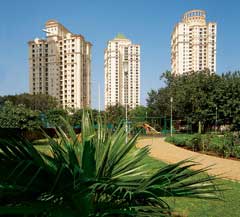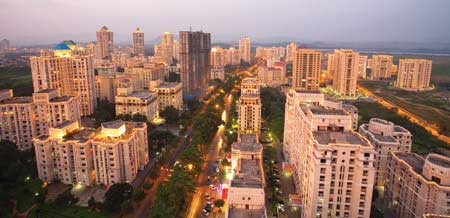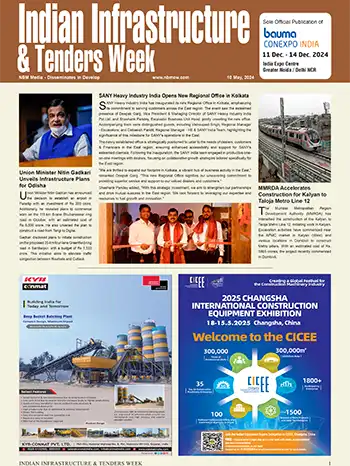Real Estate will be Driven on Firm Demand Fundamentals

Pricing versus Demand
Demand of real estate in the country has been and will continue to be governed by market dynamics of demand and supply. The period of 2007 and 2008 was a boom period. This is when the economy also grew at a fast pace. The period of late 2008 to early 2009 saw the demand retrogression of the sector led by economic slump. This was to a good extent internationally driven as foreign investments came down and domestic business sentiments were down. However, demand will take time to completely recover to the historic levels. Nonetheless, with demand fundamentals being strong and stable the real estate sector is poised for future growth. There has been a remarkable growth of the sector, by 30% across the board, beginning from April 2009 to April 2010. To reiterate, demand projections should not be made firm and sustainable basis. This is as because economic growth will continue to maintain its cycles.
On pricing, I should say it was not the high pricing that contributed in pulling down the demand. It was actually the market situation. However, actual price escalation has not been more than the range of 10% to 15%. This is not unsubstantiated, when market inflation has been much over 10%.

Complete balancing happening?
There is no possibility of any complete balancing act happening either in the immediate or long- term. This is as because, I mentioned demand will continue to vary based on the market forces.

Residential sector will be the main demand driver. As per industry projections, 75% of the demand will be driven by residential sector. However, to categorize, demand will be driven by the affordable housing segment. This is a segment that would actually be future demand driver for the real estate industry. Earlier affordable housing consisted only 5 percent of the product line developed by contractors and project developers. The figure has grown up to the range of 10-15% till 2010. This is well likely to grow to 50% till the year 2020.
Demand from commercial real estate will be to the tune of 25% till 2020. The IT & ITES sector will be the demand puller. However, the sector is yet to fully recover leading to the demand pull.
Is it not paradoxical when economy is projected to grow at more than 8 percent?
It is not. To make the demand grow from real estate sector, there has to be corrections on the inflation front. Besides, land, the this, vital component has to be made available by the government at reasonable cost.
What about retail real estate
Retail real estate would take long to make its mark as a demand driver. As the economy is yet to recover fully.
Why demand from this segment has not picked up?
Despite being developed on the basis of the buying propensity of the mass in individual markets: The sluggish market sentiments make the low demand contribution added to the factors of high land cost.

Or were the DPRs at fault
The DPR had much less to do for non materializing of the demand. To reiterate, it was again the market forces that made the difference leading to restricted demand. This was even in value added retail. However, I would like to point out, sluggish demand has varied from markets to markets. This will continue to remain so.
Government's Role
Immense, land availability at affordable rates remains outmost important. Added to this, government has to play a major role in development of infrastructure. This would include, development of mass transportation system, utility services, creation of social infrastructure. Development of infrastructure by the government will add to the growth of the sector. Significantly, it will draw in larger numbers organized players into the sector.
Take on Public Private Partnership and the experience so far
PPP could indeed help the real estate sector grow. However, to bring PPP in the sector, the government and the stakeholders to the project have to find the appropriate revenue model. The revenue model has to be well indexed to market levels. There have been some states which have given good examples of development of real estate, precisely residential real estate through adoption of PPP models. In Maharashtra, a model was tried which involved transfer of development rights to the government by transferring the land. In lieu of the same, the land provider was allowed to construct projects through utilization of the floor area ratio. The scheme was successful.
However, on a macro level the PPP experience has been modest in the country. This is as because there are multiple regulations involved for the developers in buying the land and transferring the same to the government for approval. The whole exercise becomes costly. This in turn pushes up the cost of the project, making it unviable to take upon. There needs to be PPP models on the similar lines of core infrastructure projects for the real estate sector as well based on BOT or BOOT principals.
Developer's role in developing quality and timely delivered projects
There is scope for improvement for project developers for efficient product designing based. Efficient product designing has to be undertaken based on customized demand requirements. There is scope of research and development for maximizing usable area, sourcing of materials and equipments. Scope remains for improvement in maintenance of the infrastructure created.
Hiranandani’s approach on the same, especially adoption of efficient project management systems

For timely project completion, we have our own in house project management wing.
Present & future projects and investments involved
Hiranandani is coming up with a slew of residential projects in Powai, Thane, Chembur, Kandivali, Chennai, Hyderabad and Bangalore. We are now looking at Ahmedabad and Nasik.
As far as commercial side is concerned, company is looking at Powai and Thane. Hiranandani have already completed a large SEZ project in Powai. We are looking at setting up a SEZ in Panvel, besides Ahmedabad and Thane.
Company is coming up with a new 160-room hotel project in Powai and it should be ready by September 2010.
Hiranandani is present in other parts of the country as well. Though volume wise we are still a Mumbai centric player but looking at other cities to expand.
Hiranandani Construction Private limited plans to launch projects worth Rs 2,000 crore across residential, commercial and IT segments in this financial year. The new projects will be launched at Thane, Ahmedabad and Pune, and Kandiwali, Chembur, and Panvel areas in Mumbai. While 70% of this new development will be in the residential segment, the remaining 30% will be across commercial and IT segments.
Status of gas power project in Pune
Company is looking for setting 400 MW power project at Navlakumbhe on the periphery of Pune. Our plan is to generate 2500 MW of power over the next five years with an investment of Rs100bn plus.
Status of 23 Marina project in Dubai
23 Marina is our international project. It is a 395 metre high 90 storied neo lifestyle residential tower coming up in the upscale Marina region of Dubai. The project is tipped to be the world’s second tallest residential tower. The project is progressing well. The project is expected to be completed by October 2011.
Group’s future business plans to go public to raise fund
Not any, in fact.
NBMCW July 2010


















